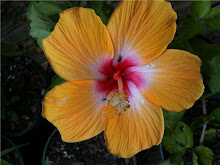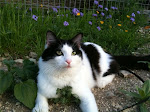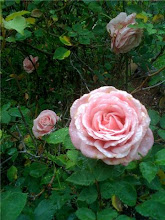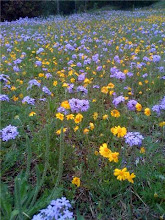Acne can be very worrisome - whether experienced by a teen or a person in the 20's, 30's, 40's or older. Here are some remedies that help me heal my skin and prevent additional breakouts.

Lavender, Citrus Peel, Oatmeal Sugar Scrub - I love this scrub! I recommend it for anyone with oily skin, breakouts or not. It is an amazing product -
2 cups organic sugar
1/4 cup castile liquid soap
1/4 cup sweet almond oil
1 tablespoon ground lavender flowers
1 tablespoon ground organic citrus peel (I mostly use peels from oranges and grapefruits)
1 tablespoon ground instant oatmeal
10 drops of your favorite essential oil

In a grinder, place lavender flowers, peel and oatmeal and grind until powdered. Add the powdered herbs into a bowl along with 2 cups sugar.

Add 10 drops essential oil. In another container, mix castile soap and sweet almond oil. Slowly drizzle the mixture into the sugar mixture and mix. Package and enjoy! I use each morning and I just love the way my skin feels!
I'm currently giving samples of this scrub out so if interested send me an email - it's a goody.
Herbal Vinegar
Vinegars help tone your skin and remove excess soap buildup from our hair and skin. Try this herbal vinegar directly on the skin to restore, tone, and prevent infection.
- apple cider or white wine vinegar
- purified water
- fresh or dried mint leaves
Fill a jar with mint leaves and stems, packing it full. Pour in the vinegar, covering all the leaves. Place lid and store for 3-5 days in a cool and dark location, shaking it at least once a day. Strain the infused vinegar, discard/compost the spent mint leaves and stems. Dilute the vinegar infusion with purified water (about 1 part vinegar to 4 parts water for a strong toner 1:6 or 1:8 for a lighter toner).
Apple cider vinegar is underused, in my opinion. It has great toning qualities and helps balance and nourish the skin. If the smell is too strong for you, try diluting the finished product with rose water.

Super Body Salt Soak - 3 cups Epsom salt (magnesium is the super star in this salt)
- 1/2 cup baking soda
- 20 drops of your favorite essential oil
- 2 pinches chamomile flowers
- 2 pinches lavender flowers
This salt soak helps draw out impurities from our skin and also helps feed the skin magnesium. I read that bathing in magnesium/Epsom salts is an excellent way for the body to absorb magnesium and that taken internally isn't as effective as bathing. I love the drawing out action this soak has along with it's feeding/nourishing action.
I grow my own lavender flowers and harvest them, dry them and store them whole. When I'm ready to use them, I'll grind them to preserve their freshness. I purchase chamomile flowers organically from a very reputable source. These flowers I purchase are whole and vibrant - the yellow is crisp and the petals are still in tact.

In a grinder, combine the flowers and lightly grind. In a bowl, combine the salt, baking soda, lightly ground flowers and essential oil. Mix together and package in recycled glass jars. Stores beautifully and is very fragrant. The chamomile flowers are very sweet smelling.
This soak is excellent for irritated skin. I gave a jar of this to a friend of mine who needed to offer help to a friend of hers. He was covered from head to toe in hives and rashes. The salt soak drew out the impurities and cleared up his skin. I was elated to hear of his results and happy I was able to help him.
I think this would be a great soak for someone with body acne, as well.

































+and+wildflowers+loving+the+field.jpg)







